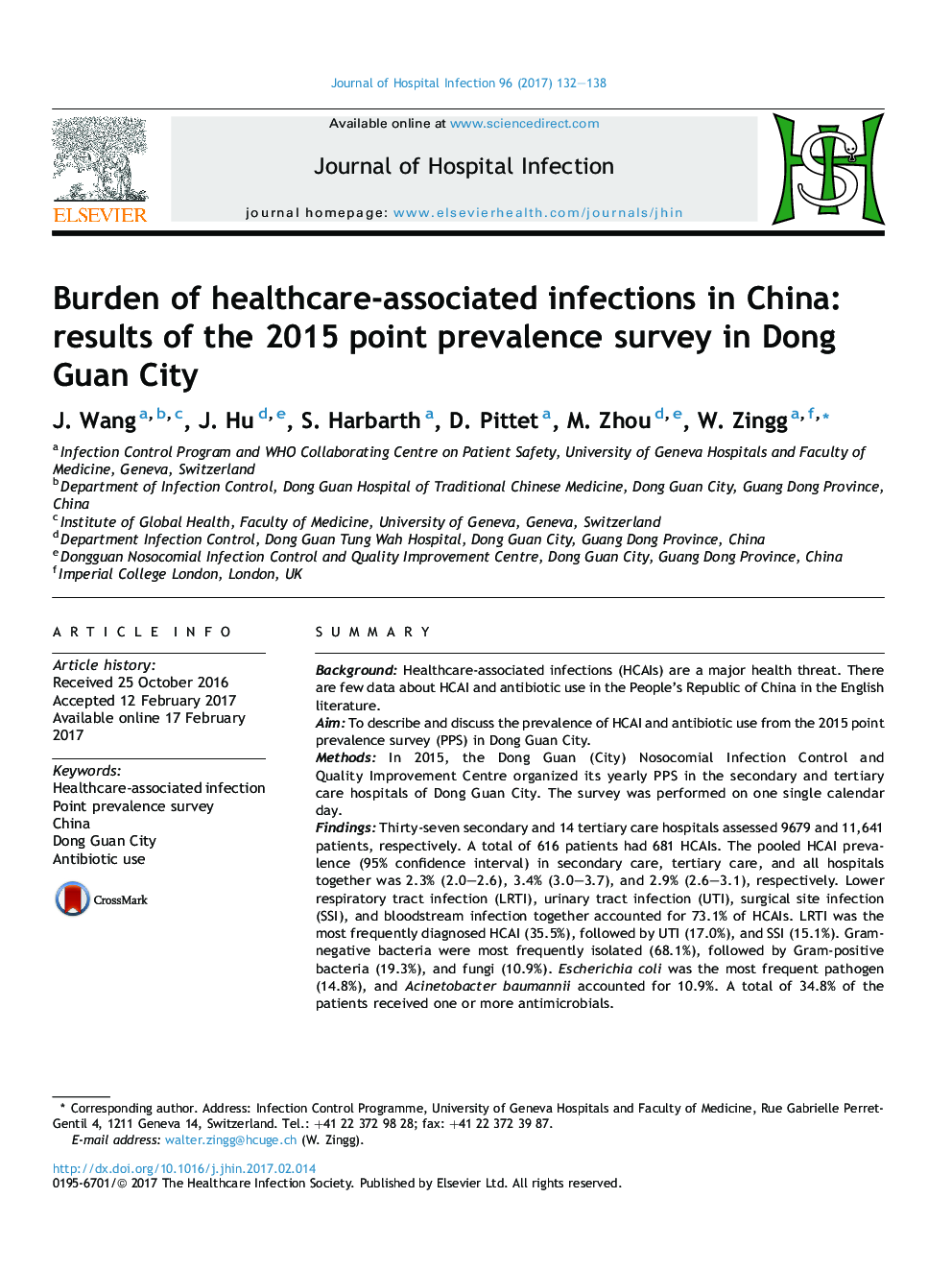| Article ID | Journal | Published Year | Pages | File Type |
|---|---|---|---|---|
| 5668213 | Journal of Hospital Infection | 2017 | 7 Pages |
SummaryBackgroundHealthcare-associated infections (HCAIs) are a major health threat. There are few data about HCAI and antibiotic use in the People's Republic of China in the English literature.AimTo describe and discuss the prevalence of HCAI and antibiotic use from the 2015 point prevalence survey (PPS) in Dong Guan City.MethodsIn 2015, the Dong Guan (City) Nosocomial Infection Control and Quality Improvement Centre organized its yearly PPS in the secondary and tertiary care hospitals of Dong Guan City. The survey was performed on one single calendar day.FindingsThirty-seven secondary and 14 tertiary care hospitals assessed 9679 and 11,641 patients, respectively. A total of 616 patients had 681 HCAIs. The pooled HCAI prevalence (95% confidence interval) in secondary care, tertiary care, and all hospitals together was 2.3% (2.0-2.6), 3.4% (3.0-3.7), and 2.9% (2.6-3.1), respectively. Lower respiratory tract infection (LRTI), urinary tract infection (UTI), surgical site infection (SSI), and bloodstream infection together accounted for 73.1% of HCAIs. LRTI was the most frequently diagnosed HCAI (35.5%), followed by UTI (17.0%), and SSI (15.1%). Gram-negative bacteria were most frequently isolated (68.1%), followed by Gram-positive bacteria (19.3%), and fungi (10.9%). Escherichia coli was the most frequent pathogen (14.8%), and Acinetobacter baumannii accounted for 10.9%. A total of 34.8% of the patients received one or more antimicrobials.ConclusionThe pooled prevalence is in the range of other recent Chinese studies, but lower compared to previous reports in Europe, and the USA. The use of antimicrobials for therapeutic purposes is similar to that in Europe, but lower than previous Chinese reports, and lower than in the USA.
